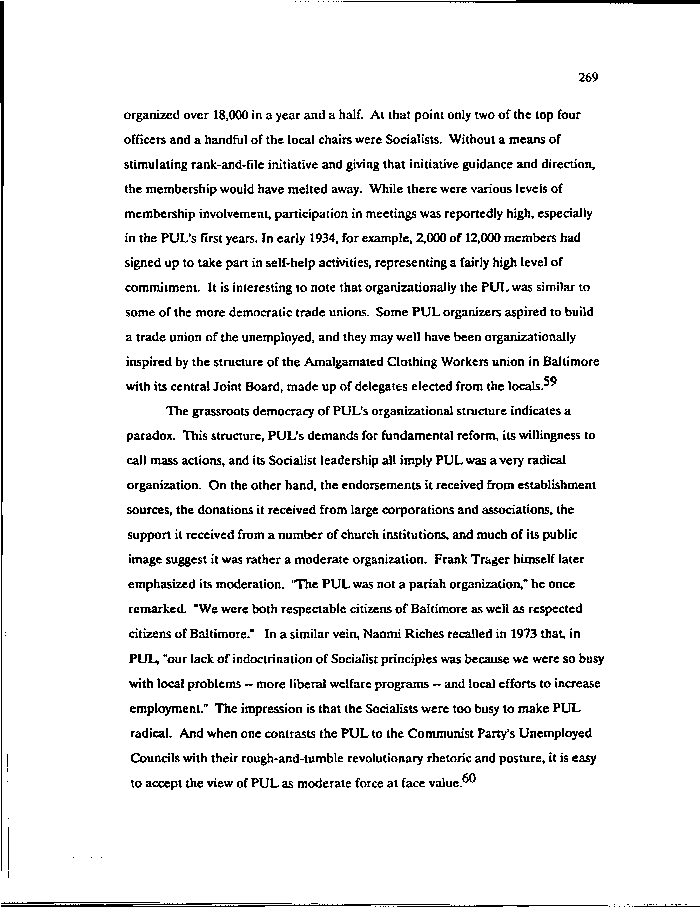|
269
organized over 18,000 in a year and a half. At that point only two of the top four
officers and a handful of the local chairs were Socialists. Without a means of
stimulating rank-and-file initiative and giving that initiative guidance and direction,
the membership would have melted away. While there were various levels of
membership involvement, participation in meetings was reportedly high, especially
in the PUL's first years. In early 1934, for example, 2,000 of 12,000 members had
signed up to take part in self-help activities, representing a fairly high level of
commitment. It is interesting to note that organizationally the PUL was similar to
some of the more democratic trade unions. Some PUL organizers aspired to build
a trade union of the unemployed, and they may well have been organizationally
inspired by the structure of the Amalgamated Clothing Workers union in Baltimore
with its central Joint Board, made up of delegates elected from the locals.59
The grassroots democracy of PUL's organizational structure indicates a
paradox. This structure, PUL's demands for fundamental reform, its willingness to
call mass actions, and its Socialist leadership all imply PUL was a very radical
organization. On the other hand, the endorsements it received from establishment
sources, the donations it received from large corporations and associations, the
support it received from a number of church institutions, and much of its public
image suggest it was rather a moderate organization. Frank Trager himself later
emphasized its moderation. "The PUL was not a pariah organization," he once
remarked. "We were both respectable citizens of Baltimore as well as respected
citizens of Baltimore." In a similar vein, Naomi Riches recalled in 1973 that, in
PUL, "our lack of indoctrination of Socialist principles was because we were so busy
with local problems - more liberal welfare programs — and local efforts to increase
employment." The impression is that the Socialists were too busy to make PUL
radical. And when one contrasts the PUL to the Communist Party's Unemployed
Councils with their rough-and-tumble revolutionary rhetoric and posture, it is easy
to accept the view of PUL as moderate force at face value.
|

